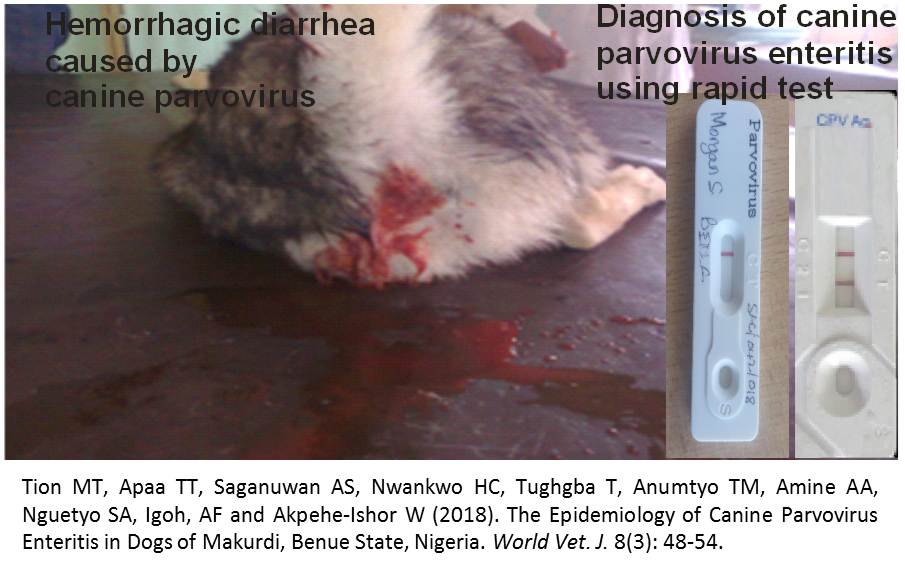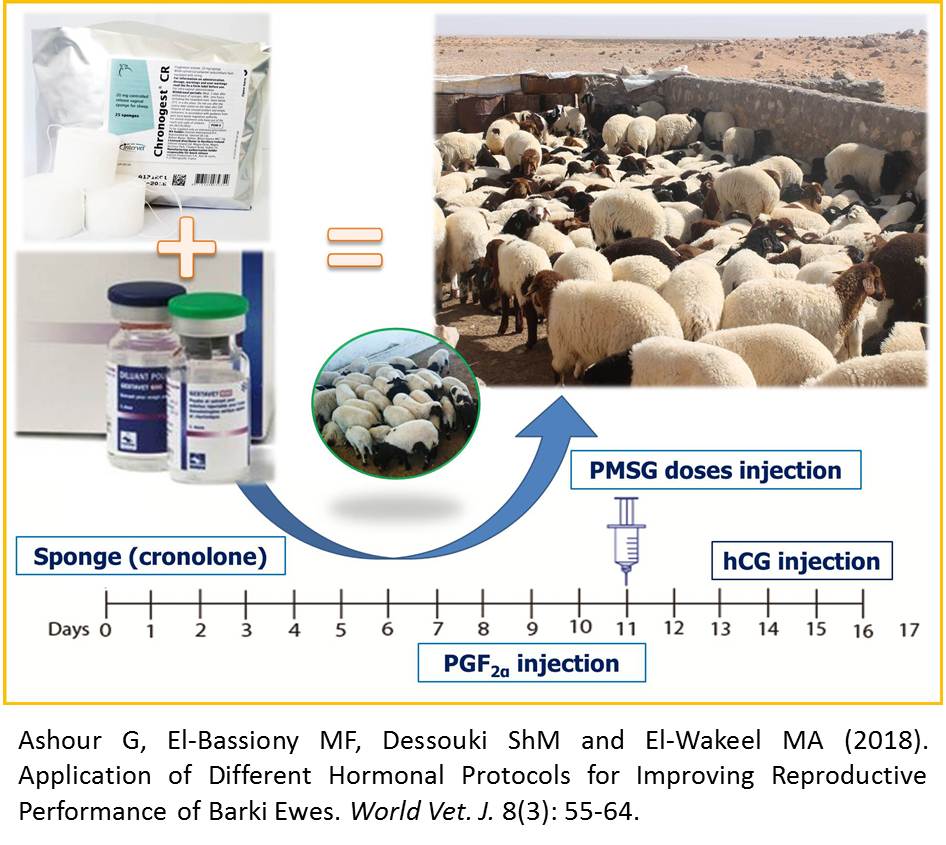Previous issue | Next issue | Archive
Volume 8 (3); September 25, 2018 [Booklet]
The Epidemiology of Canine Parvovirus Enteritis in Dogs of Makurdi, Benue State, Nigeria.
Tion MT, Apaa TT, Saganuwan AS, Nwankwo HC, Tughgba T, Anumtyo TM, Amine AA, Nguetyo SA, Igoh, AF and Akpehe-Ishor W.
World Vet. J. 8(3): 48-54, 2018; pii:S232245681800005-8
ABSTRACT
Since its emergence, canine parvovirus enteritis has remained the most significant and important cause of enteritis in puppies between six weeks and six months of age. The aim of this study was to carry out a retrospective study in order to assess the effect of certain factors on the prevalence of the disease in diagnosed cases presented to the veterinary teaching hospital Annex, university of agriculture Makurdi from 2010 to 2016. The overall prevalence of the diagnosed cases of canine parvoviral enteritis has been at 5.7% for the past seven years. Age, sex, breed, vaccination status was showed to have been associated with the infection. Puppies of up to five months of age, males, breeds such as the Nigerian local breed, Alsatian, Caucasian, Rottweiler and Russian shepherd dogs and unvaccinated dogs are prone to this disease. Furthermore, this study revealed that early presentation and an aggressive support management of these cases had brought about a high recovery outcome of 85.4%. The distribution of the disease according to the season showed the highest incidence of cases occurred in 2012 (25.8%) and had descended down to (9%) by 2016 with most cases witnessed around January (22.5%) in dry season and June (15.7%) in wet season. The need for educating both veterinarians and dog owners about core vaccinations in dogs is paramount.
Keywords: Canine parvoviral enteritis, Dogs, Makurdi, Prevalence
[Full text-PDF] [MOBI] [ePUB] [AZW3] [XML] [Import into EndNote] [Citations on Google Scholar]
Application of Different Hormonal Protocols for Improving Reproductive Performance of Barki Ewes.
Ashour G, El-Bassiony MF, Dessouki ShM and El-Wakeel MA.
World Vet. J. 8(3): 55-64, 2018; pii:S232245681800006-8
ABSTRACT
This investigation was designed to assess reproductive improvement in Barki ewes using different hormonal protocols. Seventy-five non-pregnant and non-lactating Barki ewes were randomly assigned into three equal groups (25 ewes each), namely G1, G2 and G3. (G1) served as control, while (G2) was treated with an intravaginal progestagen impregnated sponge for 12 days then was removed. On the ninth day, all treated ewes received an intramuscular injection of prostaglandin F2α. (G3) was also synchronized as G2, in addition to on the 10th day ewes were received an intramuscular injection of 750 IU PMSG in descending doses for three days so that the last dose was injected at the 12th day concurrently with sponges' removal. Meanwhile, on the 14th day, all ewes in G3 were received an intramuscular injection of hCG hormone (500 IU/ewe). The results showed an increase in plasma progesterone level from the first day of pregnancy and rises up to the last day before parturition. Progesterone was found to be higher in G3 (that had higher twining rate) than in G2 than in G1. Insignificant increase in estrus response was observed in groups (G2, G3) compared to G1 (100, 100 and 92%, respectively). Conception rate was significantly higher in G3 (100%) than G2 (92%) and G1 (88%). While, abortion rate was higher in G1 and surpassing G2 and G3 (9.0, 0.0 and 0.0 %, respectively). Lambing rate was significantly higher in G3 as compared to G2 and G1 groups (100, 92 and 80 %, respectively). While, weaning rate was recorded to be insignificantly higher in G2 than in G1 and G3 (100.0, 95.45 and 94.29%, respectively). It could be concluded that, hormonal manipulation using intravaginal progestagen impregnated sponge and PMSG in the presence of hCG; would be a proper way for enhancing the reproductive efficiency of Barki ewes.
Keywords: Barki ewes, Synchronization, Superovulation, Twining, Reproduction
[Full text-PDF] [MOBI] [ePUB] [AZW3] [XML] [Import into EndNote] [Citations on Google Scholar]
Previous issue | Next issue | Archive
![]() This work is licensed under a Creative Commons Attribution 4.0 International License (CC BY 4.0).
This work is licensed under a Creative Commons Attribution 4.0 International License (CC BY 4.0).






